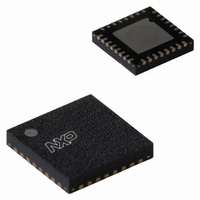SC16C652BIBS,157 NXP Semiconductors, SC16C652BIBS,157 Datasheet - Page 22

SC16C652BIBS,157
Manufacturer Part Number
SC16C652BIBS,157
Description
IC UART DUAL W/FIFO 32HVQFN
Manufacturer
NXP Semiconductors
Datasheet
1.SC16C652BIB48128.pdf
(43 pages)
Specifications of SC16C652BIBS,157
Features
2 Channels
Number Of Channels
2, DUART
Fifo's
32 Byte
Voltage - Supply
2.5V, 3.3V, 5V
With Auto Flow Control
Yes
With Irda Encoder/decoder
Yes
With False Start Bit Detection
Yes
With Modem Control
Yes
With Cmos
Yes
Mounting Type
Surface Mount
Package / Case
32-VFQFN Exposed Pad
Transmitter And Receiver Fifo Counter
Yes
Data Rate
5Mbps
Operating Supply Voltage (max)
5.5V
Mounting
Surface Mount
Pin Count
32
Operating Temperature (min)
-40C
Operating Temperature (max)
85C
Operating Temperature Classification
Industrial
Lead Free Status / RoHS Status
Lead free / RoHS Compliant
Other names
568-2046
935276387157
SC16C652BIBS
935276387157
SC16C652BIBS
Philips Semiconductors
SC16C652B_4
Product data sheet
7.6 Modem Control Register (MCR)
This register controls the interface with the modem or a peripheral device.
Table 20:
Bit
7
6
5
4
3
2
1
0
Symbol
MCR[7]
MCR[6]
MCR[5]
MCR[4]
MCR[3]
MCR[2]
MCR[1]
MCR[0]
Modem Control Register bits description
Description
Clock select
IR enable (see
Reserved; set to ‘0’.
Loop-back. Enable the local loop-back mode (diagnostics). In this mode the
transmitter output (TX) and the receiver input (RX), CTS, DSR, CD, and RI
are disconnected from the SC16C652B I/O pins. Internally the modem data
and control pins are connected into a loop-back data configuration (see
Figure
operational. The Modem Control Interrupts are also operational, but the
interrupts’ sources are switched to the lower four bits of the Modem Control.
Interrupts continue to be controlled by the IER register.
OP2/INT enable
(OP1). OP1A/OP1B are not available as an external signal in the
SC16C652B. This bit is instead used in the Loop-back mode only. In the
Loop-back mode, this bit is used to write the state of the modem RI interface
signal.
RTS
DTR
Rev. 04 — 1 September 2005
logic 0 = divide-by-1 clock input
logic 1 = divide-by-4 clock input
logic 0 = enable the standard modem receive and transmit input/output
interface (normal default condition)
logic 1 = enable infrared IrDA receive and transmit inputs/outputs. While
in this mode, the TX/RX output/inputs are routed to the infrared
encoder/decoder. The data input and output levels will conform to the
IrDA infrared interface requirement. As such, while in this mode, the
infrared TX output will be a logic 0 during idle data conditions.
logic 0 = disable Loop-back mode (normal default condition)
logic 1 = enable local Loop-back mode (diagnostics)
logic 0 = forces INT (A, B) outputs to the 3-state mode and sets OP2 to a
logic 1 (normal default condition)
logic 1 = forces the INT (A, B) outputs to the active mode and sets OP2 to
a logic 0
logic 0 = force RTS output to a logic 1 (normal default condition)
logic 1 = force RTS output to a logic 0
logic 0 = force DTR output to a logic 1 (normal default condition)
logic 1 = force DTR output to a logic 0
5). In this mode, the receiver and transmitter interrupts remain fully
Dual UART with 32-byte FIFOs and IrDA encoder/decoder
Figure
17).
© Koninklijke Philips Electronics N.V. 2005. All rights reserved.
SC16C652B
22 of 43














